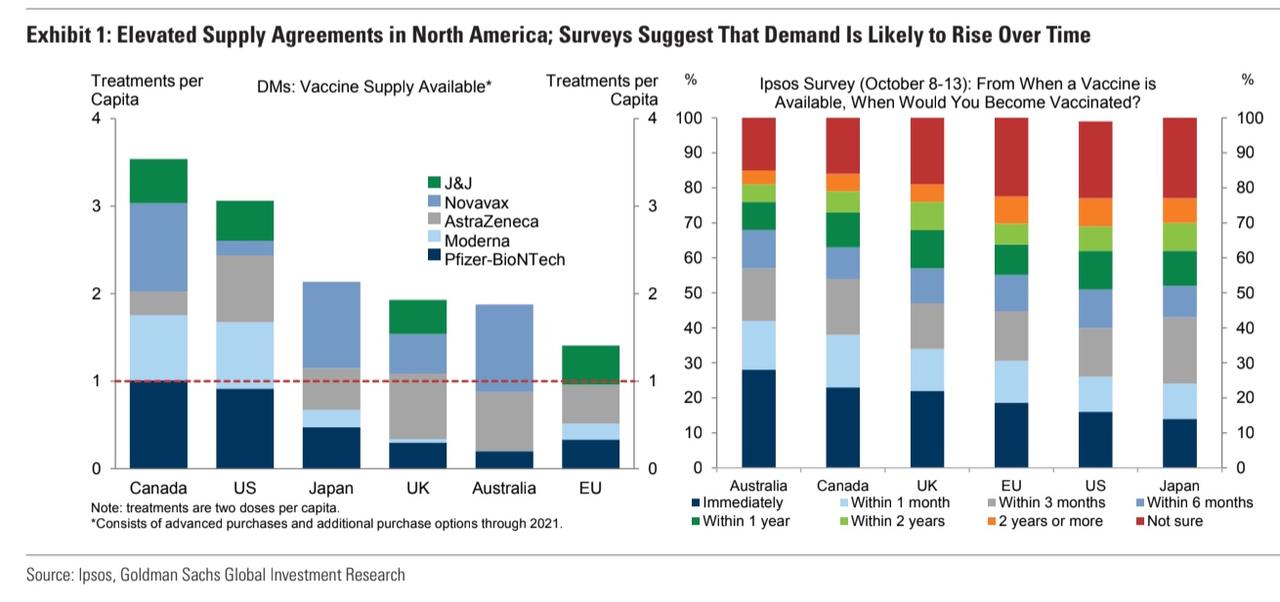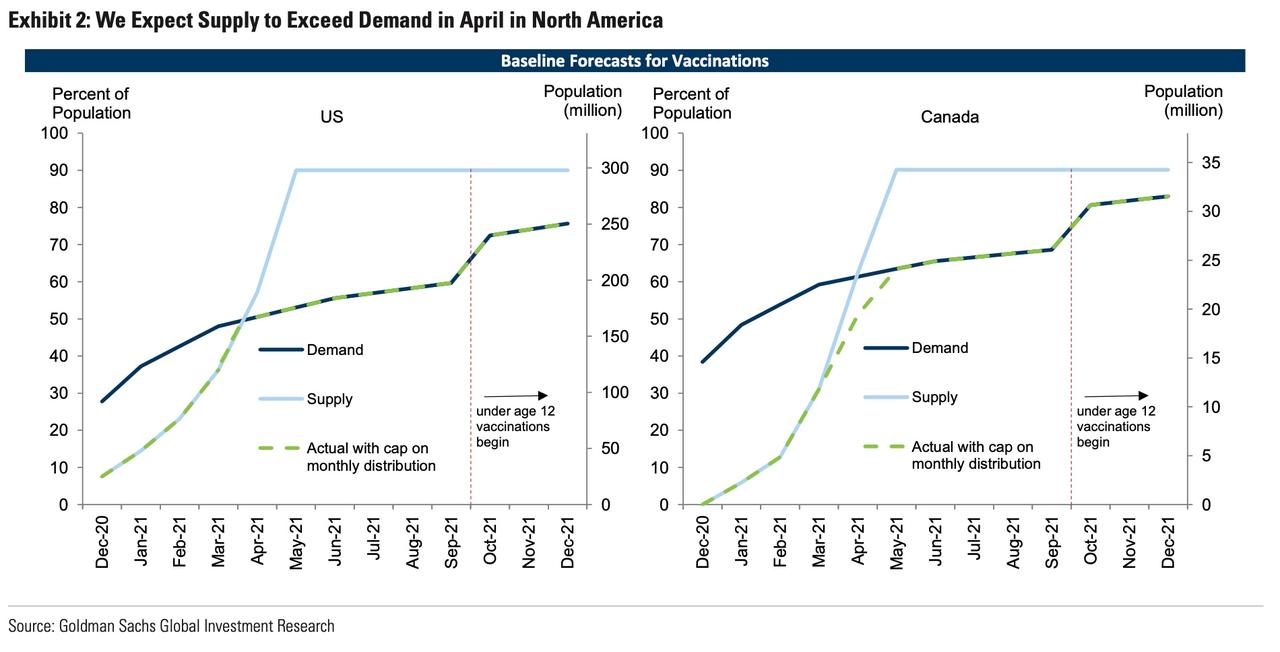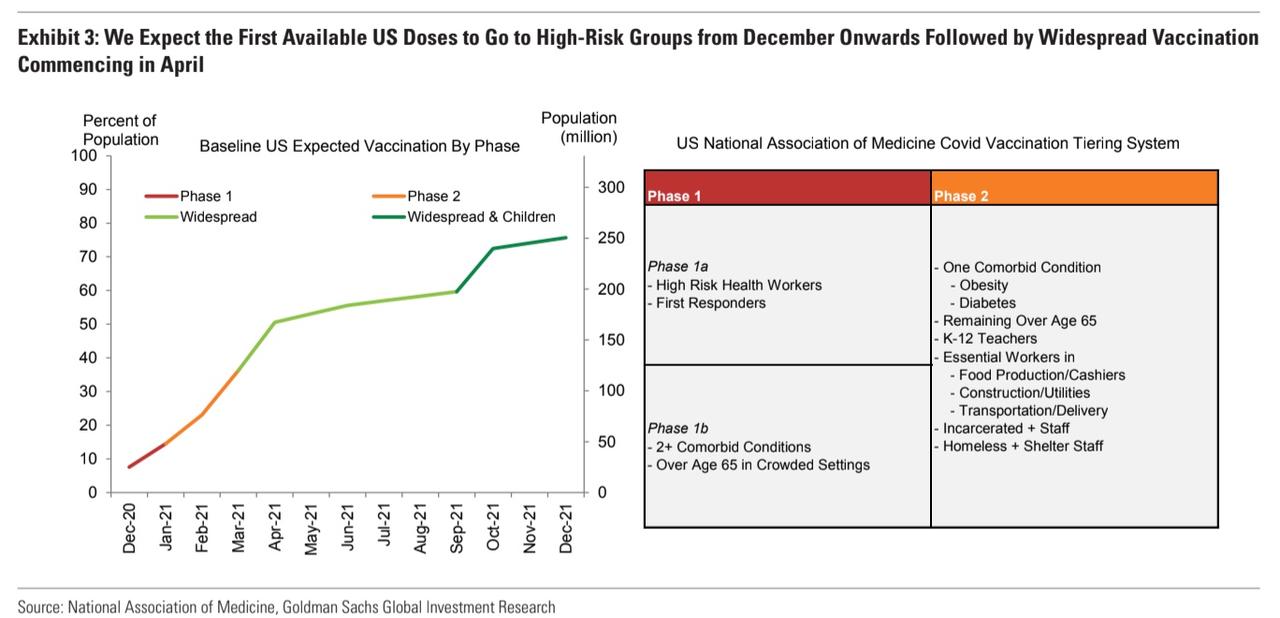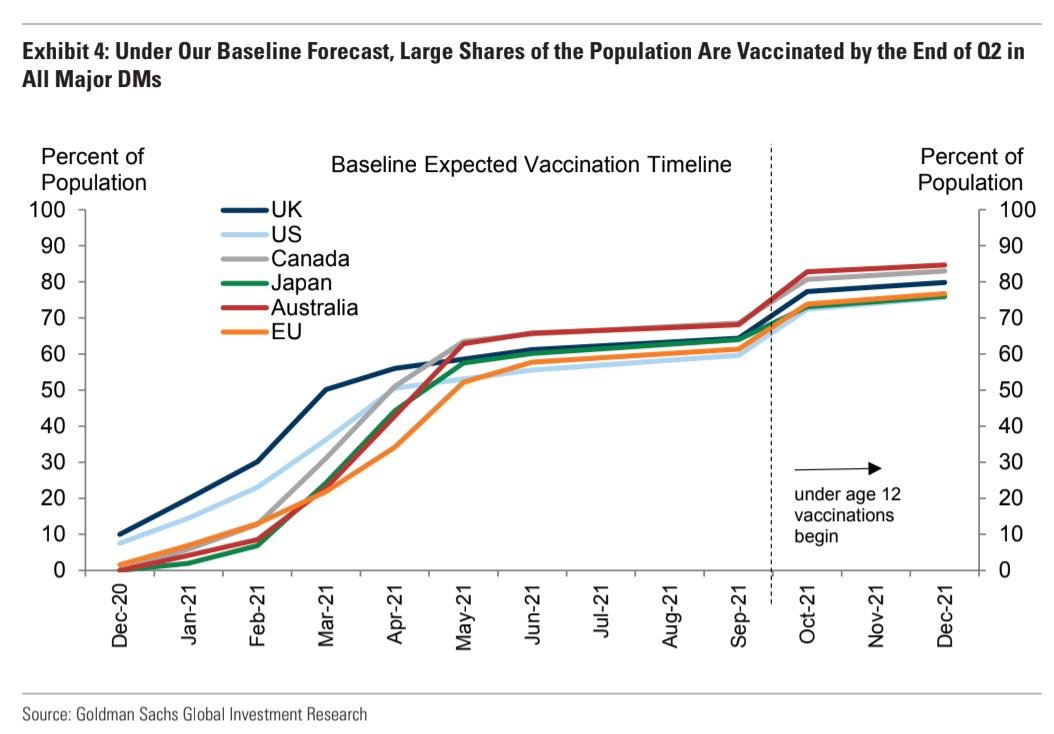Here Is Who Will Get The COVID Vaccine First According To Goldman
Tyler Durden
Fri, 11/27/2020 – 17:00
Last week, Moncef Slaoui, the head of Washington’s “Operation Warp Speed”, laid out the ‘official’ timeline for vaccinating the American population, culminating in the extremely optimistic projection that the American population would reach 70% vaccination threshold – supposedly enough to achieve ‘herd immunity’ in May. The first doses, on the other hand, are expected to be administered on Dec. 11 and Dec. 12, Slaoui said.
Now, according to a team of analysts at Goldman Sachs, most major developed-market economies aren’t expecting to make meaningful progress in inoculating their populations until later into the second half of Q2.
Looking ahead, the FDA has already set up Pfizer’s and Moderna’s vaccines to receive emergency-use approval perhaps as soon as next week, while based on comments from European Commission President Ursula von der Leyen, the European Medicines Agency (EMA) is likely to authorize the three leading vaccines by year’s end.
With investors already shifting their focus to actual distribution, Goldman’s team has published projections for six major advanced economies in five steps:
1. Global vaccine production: We use monthly global production projections from our health care equity analysts for Pfizer-BioNTech, Moderna, AstraZeneca, Novavax, and Johnson & Johnson. The projections assume that production gradually rises in early 2021 and achieves the announced targets.
2. Country vaccine supply: To allocate production across countries, we use data on agreements of purchases and purchase options, shown in the left panel of Exhibit 1, and data on initial deliveries. We assume the production share a country receives from a developer rises in the country’s initial deliveries, confirmed purchases, optional purchases, and population but falls to zero when contracted and optional purchases are delivered or when cumulative deliveries across the five developers exceed 90% of the population.2
3. Country vaccine demand: We use responses to the global Ipsos survey question of “From when a vaccine is available, when would you become vaccinated?” (Exhibit 1, right). This survey suggests that most people expect to wait some time before taking it, consistent with wanting to learn more about safety, side effects, and effectiveness. We also assume that demand will be more elevated and front-loaded than reported in the October Ipsos survey, which preceded recent trial results and upcoming public vaccination campaigns. Based on the expected timing of trials for children, we assume vaccinations for children under age 12 start globally in October 2021.
4. Vaccine distribution capacity: We assume a speed limit on distribution that rises from 10% of the population in December to 20% of the population from February 2021 onwards based on the peak speed of the flu vaccine US distribution this year, corresponding to 20% of the population per month.
5. Country vaccinations: We estimate monthly vaccination as the minimum of supply, demand, and distribution capacity Exhibit 2 illustrates the estimates of supply (light blue), demand (dark blue), and actual vaccinations (dotted green line) for the US and Canada. In both countries, vaccination is initially significantly limited by scarce supply, until additional capacity allows supply to exceed slowing demand in April. In Canada, the speed limit on distribution binds briefly in April. Demand drives vaccination from April in the US and May in Canada, rises gradually over the summer based on survey estimates, increases significantly with child vaccinations in the fall, and jumps past 70% in October in both countries.
Exhibit 3 shows our expected timeline for actual US vaccinations by tiering phase. High-risk groups, mostly health care workers and individuals with comorbid conditions, will likely receive the first available doses from mid-December, likely leading to significant public health benefits from Q1 onwards, followed by widespread vaccination from early April.
Looking more broadly, our baseline forecast is that large shares of the population are vaccinated by the end of Q2 in all major DMs (Exhibit 4). The UK is expected to vaccinate 50% of its population in March with the US and Canada following in April. We forecast that the EU, Japan, and Australia reach this 50% threshold in May. As production becomes abundant by mid-Q2, vaccination rises gradually with demand and surpasses 70% across all DMs in the fall when children become eligible.
We next explore a downside scenario. This scenario assumes that (1) the AstraZeneca and Johnson & Johnson vaccines, which are both viral vector vaccines, do not succeed (perhaps reflecting safety events), and (2) vaccine demand measures fall back to October 2020 Ipsos survey levels. In this scenario, supply rises much more slowly in the EU, reflecting a larger reliance on both developers. In the medium run, vaccination levels are the lowest in the EU (assuming no new contracts are signed) but also the US and Japan, where the decline in demand leaves vaccination at relatively low long-term levels. In contrast, Australia and Canada are more resilient, benefiting from diversified supply contracts and relatively strong vaccine demand measures.
* * *
Source: Goldman Sachs
While various governments have released comprehensive and detailed timelines for when their populations will have achieved ‘herd immunity’, Goldman’s analysts warned that European countries are skewed toward “the later timeline” since AstraZeneca and Johnson and Johnson are lagging behind Pfizer and Moderna.
Canadian Prime Minister Justin Trudeau held a press briefing on Friday to explain the official Canadian vaccination timeline. The PM said he expects most Canadians will be vaccinated by September. The announcement follows Trudeau’s remarks from earlier this week that Canada “won’t be first in line” for a vaccine since it hadn’t struck any major deals with suppliers.
But Canada is in much better shape than the vast majority of countries, which have no deals at all. They will need to rely on the kindness of strangers – either the WHO and Bill Gates’s (who are trying via their “Covax” project to raise enough money to vaccinate the whole world) or President Xi and Beijing
via ZeroHedge News https://ift.tt/2JfrOkD Tyler Durden




